Exploring Pareidolia: Patterns in Chaos
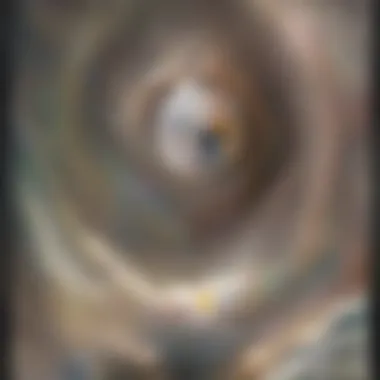
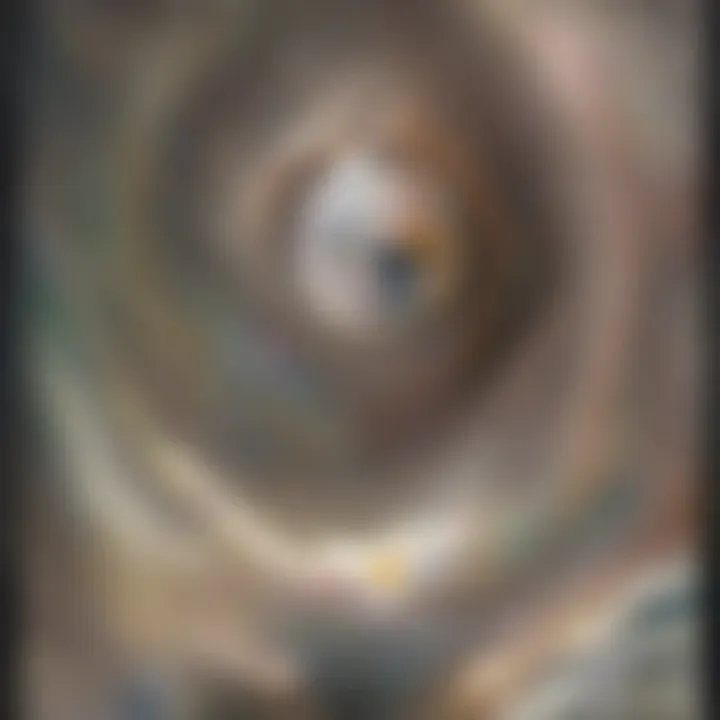
Intro
Pareidolia is a fascinating aspect of human perception that warrants deeper examination. It refers to the tendency of individuals to perceive familiar shapes or patterns in random stimuli, such as seeing faces in clouds or objects in abstract art. This phenomenon is not just an odd quirk of human cognition; it unveils significant insights into how we process visual information and our innate desire to find meaning in chaos. Through this exploration, we will uncover the cognitive mechanisms behind pareidolia, its implications in various fields, and some intriguing applications in art and technology.
Research Context
Background and Rationale
The study of pareidolia provides a unique lens through which we can better understand human perception and behavior. In a world filled with information, our brains often seek to simplify and categorize stimuli to make sense of our surroundings. Pareidolia showcases this tendency, demonstrating how our cognitive faculties shape our experiences. Researchers from psychology, neuroscience, and art have shown increasing interest in this area, as it touches upon both cognitive biases and creativity.
Recognition of patterns has evolutionary significance, aiding in survival by helping early humans identify faces or potential threats. This critical adaptive skill evolved, yet sometimes leads us astray, prompting distorted expectations or misunderstood visuals. Thus, investigating pareidolia enhances our understanding of cognition and perception, and its implications span across multiple disciplines.
Literature Review
The existing body of literature provides a rich foundation for further exploration of pareidolia. Numerous studies have investigated its cognitive underpinnings. For instance, a research article published in Cognitive Processing (2008) reflects on the visual system's inherent predisposition to recognize patterns, particularly faces. Furthermore, work by the neuroscientist V.S. Ramachandran delves into how atypical visual processing can reveal the brain's adaptation mechanisms.
Other studies examine the cultural and artistic representations of pareidolia. Modern art and design have exploited this phenomenon to evoke emotional responses and initiate dialogues. Notable examples exist in the works of Salvador Dalí and more contemporary artists who playfully embrace the ambiguity of perceived forms. In technology, pareidolia has found relevance in the realm of artificial intelligence. Programs designed to interpret visual data must grapple with pareidolia, as they simulate human-like perception processes.
Overall, the literature not only clarifies the mechanisms underlying pareidolia but also illustrates its broad implications in psychology, art, and artificial intelligence, paving the way for a more nuanced understanding of human cognition.
Methodology
Research Design
The investigation into pareidolia will adopt a multi-faceted approach, combining qualitative and quantitative methods. By utilizing surveys and interviews, we can gather personal experiences and insights regarding pareidolia instances. Additionally, behavioral experiments can be conducted to measure response rates and tendencies toward pattern recognition.
Data Collection Methods
Data will be collected through:
- Surveys: Structured questionnaires distributed to a diverse population, aimed at capturing self-reported experiences with pareidolia.
- Interviews: In-depth discussions with artists, psychologists, and AI experts to gather qualitative data and personal anecdotes.
- Experiments: Assessing how participants interpret ambiguous stimuli in controlled settings, measuring their reactions to various visual displays.
Through these strategies, the research aims to forge connections between theory and experiential evidence, contributing to the broader discourse surrounding pareidolia.
Understanding Pareidolia
Pareidolia is a fascinating topic that unveils the intricacies of human perception. It plays a pivotal role in explaining why we tend to see patterns where there might be none. Grasping the concept of pareidolia is essential for understanding various aspects of psychology, art, and technology. This exploration will provide insights into cognitive processes, cultural implications, and the relevance of pareidolia in today’s society.
Defining Pareidolia
Pareidolia is a psychological phenomenon where the mind responds to random stimuli by creating a familiar pattern or image. This often results in individuals perceiving faces in clouds, animal shapes in rock formations, or even abstract patterns in images. The tendency to see these recognizable patterns is not simply a quirk of human nature; it is rooted deeply in our cognitive functions.
The term pareidolia is derived from the Greek words "para", meaning "beside" or "instead of", and "eidolon", meaning "image" or "form". The definition encompasses both visual and auditory aspects—seeing images or hearing sounds that are not actually present. For instance, one might hear voices in white noise or see figures in varying textures. Pareidolia exemplifies how the human brain seeks to make sense of the environment by organizing stimuli based on previous experiences and knowledge.
Understanding pareidolia is important for several reasons. It illustrates how our brains process sensory information and helps uncover the complexities of human cognition. Moreover, studying pareidolia can reveal insights into how we interpret art, culture, and even communication in technology. The intersections between these fields highlight the significant role of pareidolia in shaping our perceptions of reality.
"The human tendency to find meaning in chaos is both fascinating and essential for our survival."
In summary, defining pareidolia opens doors to diverse discussions about recognition, interpretation, and significance in various contexts. This fundamental understanding serves as the foundation for deeper exploration into the psychological basis, forms, and implications of this intriguing phenomenon.
Understanding pareidolia is not just about recognizing shapes or sounds; it is about appreciating the rich tapestry of human perception and the myriad ways it influences how we perceive reality.
The Psychological Basis of Pareidolia
The psychological basis of pareidolia is essential in understanding how humans interact with their environment. This section articulates how mental processes contribute to our ability to recognize patterns in seemingly random stimuli. By examining the underlying cognitive mechanisms and evolutionary perspectives, one can appreciate pareidolia's significance in everyday experiences and its broader implications on mental processes.
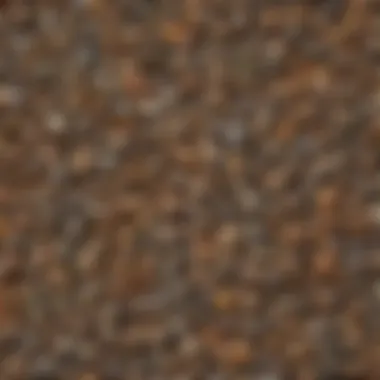
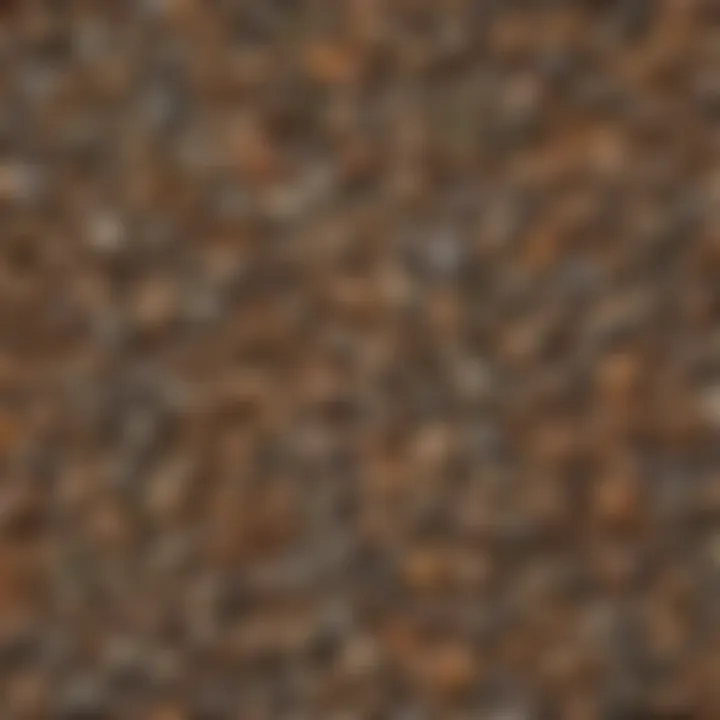
Cognitive Mechanisms
Cognitive mechanisms are the mental processes that enable individuals to interpret sensory information. Pareidolia, as a cognitive phenomenon, is rooted in these mechanisms. The brain is wired to seek patterns and make sense of the world. This tendency is fundamental to human survival. When faced with ambiguity, the brain employs heuristics to derive meaning from minimal information. This process is crucial when the brain interprets shapes, sounds, or textures that may not have a clear definition.
For instance, research indicates that the brain's visual cortex actively looks for facial features. When interpreting random patterns, the brain may inadvertently identify a face. This propensity occurs because recognizing faces is critical for social interaction. Thus, the cognitive drive for social connection can lead to perceptions of faces in various objects, ranging from rock formations to clouds.
Key points regarding cognitive mechanisms of pareidolia include:
- Pattern Recognition: The ability to detect patterns is a core function of human cognition. It assists in interpreting the world around us.
- Heuristic Processing: The brain utilizes heuristics, or mental shortcuts, to simplify complex information. This can occasionally lead to false positives in pattern recognition.
- Contextual Influence: The context in which stimuli are presented can shape perceptions. Familiarity with certain shapes can influence the tendency to see faces or patterns.
Evolutionary Perspectives
Understanding pareidolia from an evolutionary perspective adds another layer to the concept. The ability to recognize patterns likely evolved as a survival mechanism. Early humans faced many dangers. The ability to identify faces or threats quickly could mean life or death. Therefore, the advantage of rapidly interpreting ambiguous stimuli is clear.
In evolutionary terms, pareidolia may serve several functions:
- Social Cohesion: Being able to recognize faces fosters social ties and facilitates communication. The ability to see faces where none exist could help maintain group dynamics.
- Threat Detection: Identifying potential dangers through pattern recognition can enhance survival rates. This implies that pareidolia might be an adaptive trait.
- Resource Identification: Recognizing shapes and patterns in nature may lead to spotting resources such as food or shelter.
A significant finding in the study of pareidolia indicates that the brain’s tendency to see faces is not merely a quirk but an essential aspect of human evolution that enhances survival.
In summary, the psychological basis of pareidolia is both complex and fascinating. Cognitive mechanisms drive our perception of patterns, shaped by evolutionary needs that prioritize survival and social interaction. This understanding offers valuable insights into the nature of human cognition and our interactions with the world.
Forms of Pareidolia
Understanding the various forms of pareidolia is crucial for grasping the full scope of this fascinating phenomenon. The capacity to perceive familiar patterns in random stimuli can significantly affect human experience. Each form of pareidolia—visual, auditory, and tactile—offers unique insights into perception and cognition. As we explore these categories, we can better appreciate their implications across multiple domains, including art, science, and technology.
Visual Pareidolia
Visual pareidolia is perhaps the most recognized form of this phenomenon. It occurs when individuals observe recognizable shapes in random images, such as seeing a face in the clouds or patterns in burnt toast. This occurs due to the brain's inherent tendency to seek familiar configurations.
"Visual pareidolia exemplifies how our perception is sometimes more about interpretation than reality."
This recognition often serves adaptive purposes; discerning faces quickly could have been a survival advantage in ancestral environments. In modern times, visual pareidolia manifests in various cultural contexts. Artists frequently utilize this phenomenon to provoke thought or evoke emotions through their works. For instance, some may intentionally design images to encourage viewers to project their interpretations.
Auditory Pareidolia
Auditory pareidolia arises when the brain interprets obscure sounds as familiar voices or music. This could involve hearing indistinct noises that seem to form words or melodies. An example might include listening to static and perceiving a song playing in the background.
The underlying cognitive processes are similar to those in visual pareidolia, as the brain attempts to impose meaning where there is none. This form can have implications in fields like audio engineering, where communication clarity is often crucial. Moreover, it sparks interest in the realms of psychology and sound design.
Tactile Pareidolia
Tactile pareidolia is less commonly discussed but equally significant. It occurs when individuals perceive specific patterns or shapes through touch. For instance, someone might feel a textured surface and interpret it as a recognizable object.
This form can be particularly relevant in fields centered around sensory manipulation, such as virtual reality or product design. Understanding how touch influences perception allows for more effective designs that can enhance user experience. Researchers studying tactile pareidolia can provide insights into sensory integration, revealing how different modalities influence each other.
Pareidolia in Art and Culture
Pareidolia plays a significant role in art and culture, acting as a bridge between human perception and creative expression. This phenomenon not only influences individual interpretations of art but also shapes broader cultural narratives. Understanding pareidolia in this context allows us to appreciate the intricate relationship between perception, creativity, and cultural identity. It highlights how the human mind interacts with art, transforming mere images or sounds into meaningful experiences.
Historical Examples
Throughout history, pareidolia has manifested itself in various forms. One notable instance is the depiction of faces in religious artifacts, such as the Shroud of Turin. Many believers claim to see the image of Jesus Christ, which some argue enhances the spiritual significance of the artifact. Beyond religion, ancient civilizations also recognized pareidolia. The practice of interpreting shapes in natural rock formations can be traced back to ancient Greeks, where unusual formations sparked mythological narratives.
Another significant historical example is the works of artists such as Leonardo da Vinci, who intentionally used pareidolia in his paintings. In the Mona Lisa, subtle shapes and shadows suggest hidden figures, provoking viewers' imaginations and engaging them on a deeper level. Likewise, artists from the Surrealist movement embraced pareidolia, encouraging audiences to find meaning in the absurdly mundane. These historical instances show how pareidolia enriches the viewer’s experience and encourages personal interpretation.
Contemporary Interpretations
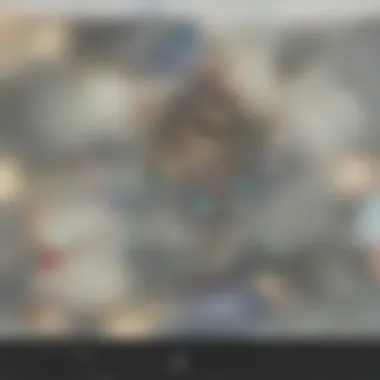
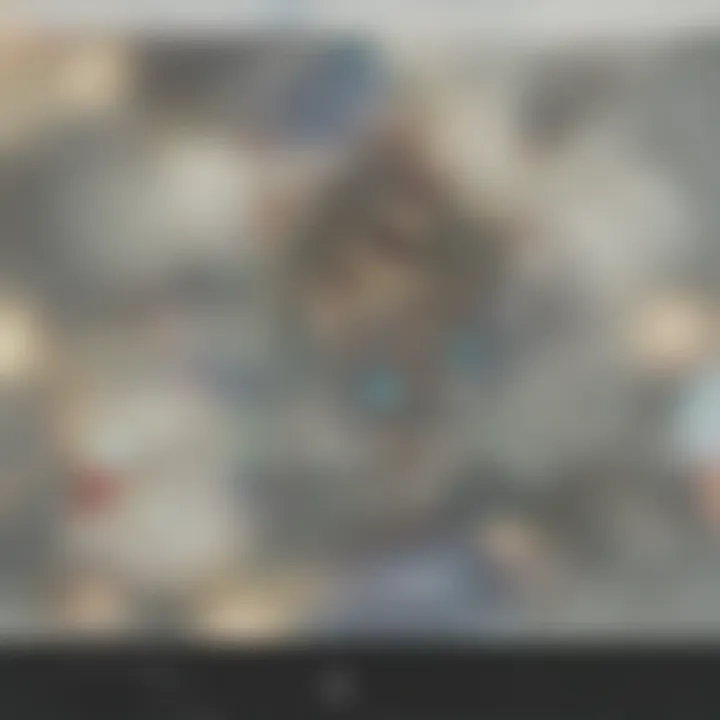
In contemporary times, pareidolia continues to be relevant, fueling artistic inspiration and fostering deeper connections between art and observers. With the advent of technology, artists are now exploring pareidolia in digital art forms. Platforms like Instagram and DeviantArt allow for the rapid sharing of images, where internet users frequently engage in pareidolia by finding faces in clouds or in abstract images. This trend underscores how pareidolia remains a part of collective cultural expressions.
Moreover, popular culture showcases pareidolia in various media. The phenomenon appears in films such as The Shape of Water, where the narrative invites viewers to see parallels and connections that may not be overt. Similarly, musicians often infuse their works with sounds that evoke pareidolic responses in listeners, like indistinct voices in musical tracks.
"Pareidolia leads individuals to derive personal meaning from their experiences, fostering a deeper connection to art and culture."
Overall, pareidolia serves both as a creative tool and a lens for cultural interpretation. It enables individuals to see the world in richer ways, transforming their relationship with art into a dialogue rather than a solitary experience. The impact of pareidolia in art and culture continues to evolve, reaffirming that human perception shapes our understanding of creativity and identity.
The Role of Pareidolia in Mental Health
The exploration of pareidolia extends beyond the confines of mere curiosity and cognitive functioning. Understanding its role in mental health is crucial, as it provides insights into not only how individuals perceive their surroundings but also the mental benefits that could arise from this perceptual phenomenon. Mental health is increasingly recognized as a spectrum influenced by a range of cognitive and emotional factors. Pareidolia can serve as a lens to view how those factors interact, demonstrating the delicate relationship between perception, emotion, and psychological well-being.
Pareidolia and Anxiety
Among the many facets of mental health, anxiety stands out prominently. Individuals with anxiety often experience heightened sensitivity to perceived threats in their environment. Pareidolia can amplify this experience, where mundane stimuli might be interpreted as significant stimuli. For example, when someone perceives a face in a shadow or an object, it might invoke a response based on their anxiety levels. This can lead to a cycle where the interpretation of innocent visual cues becomes a source of stress or panic.
However, on the flip side, pareidolia might also serve a therapeutic role in anxiety management. Engaging with pareidolic experiences can foster a sense of safety when individuals draw comfort from familiar patterns amid chaos. Recognizing and naming perceived patterns can also give individuals a sense of agency over their experiences, helping them to reframe their relationship with anxiety-provoking stimuli. Moreover, awareness and understanding of pareidolia might help individuals process these experiences, turning a potentially overwhelming perception into a manageable thought.
Imagination and Creativity
The act of interpreting shapes and patterns, as seen in pareidolia, also plays a pivotal role in fostering imagination and creativity. The very essence of creativity lies in connecting seemingly unrelated dots, much like the brain's function in recognizing pareidolic patterns. When humans visualize faces in clouds or anthropomorphize objects, they exercise a type of cognitive flexibility that is crucial for creative thought processes.
Studies suggest that individuals who engage in activities that stimulate pareidolic perceptions can enhance their creative problem-solving skills. Activities that promote imaginative thought can range from watching the clouds to engaging in artistic expression. This mental play allows for exploration beyond the obvious, encouraging thinking in abstract ways that can translate into various domains, from art to science.
Ultimately, pareidolia encourages individuals to embrace a fluid understanding of reality. While it can exacerbate certain mental health challenges, it also offers new pathways to resilience and adjustment.
"Understanding that the mind often sees what it wants can be as liberating as it is confounding."
Hence, the dual functionality of pareidolia in mental health illustrates not just a psychological curiosity but also a potential resource for coping mechanisms. By appreciating the role of pareidolia, individuals and mental health professionals could harness its insights to better understand and address anxiety while appealing to the imagination and creativity within the human experience.
The exploration of pareidolia thus holds the promise of revealing deeper truths about perception, mental health, and the intricacies of human cognition.
Pareidolia in Technology
Pareidolia, inherently a psychological phenomenon, finds significant relevance in technology, especially in fields like artificial intelligence and computer vision. The unique ability to recognize patterns, often faces or familiar objects, influences the development of algorithms and enhances user interaction. Understanding pareidolia can improve the capability of machines to interpret and respond to human emotional and cognitive states.
Artificial Intelligence and Pattern Recognition
In artificial intelligence, pattern recognition is a core application. Pareidolia informs AI's capability to discern patterns in data and explore the relationship between recognizable imagery and abstract stimuli. For example, neural networks are trained to recognize faces in diverse environments. Incorporating principles of pareidolia allows these systems to achieve higher accuracy in identifying human emotions based on visual stimuli.
Key elements include:
- Data Training: AI requires various training datasets including images that may contain random patterns. Learning from these datasets enhances its ability to detect human-like features.
- Emotional Analysis: By applying pattern recognition methods influenced by pareidolia, AI can provide insights into human behavior.
- Adaptive Learning: Algorithms can adapt based on new information. Recognizing patterns helps improve their predictive capabilities.
This intersection of psychology with technology creates Intelligent Systems that can respond empathetically to users, improving the interface between humans and machines.
Applications in Computer Vision
Computer vision technologies leverage pareidolia to enhance image recognition tasks. This field applies various algorithms to analyze imagery for specific features. Understanding how humans perceive patterns enables better designs in technology.
Common applications include:
- Facial Recognition Systems: Advanced systems can detect and analyze facial expressions, aiding security measures in numerous settings.
- Augmented Reality: By integrating pareidolic principles, augmented reality can create immersive experiences that resonate deeply with users.
- Quality Control in Manufacturing: In industries, computer vision can identify defects, providing visual checks that mirror human observation.
The future of computer vision appears promising. With ongoing research, machines will likely demonstrate enhanced understanding of context, leading to richer interactions with visual information.
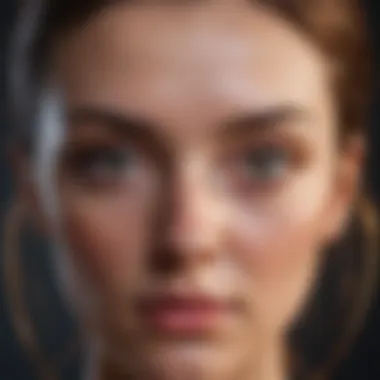
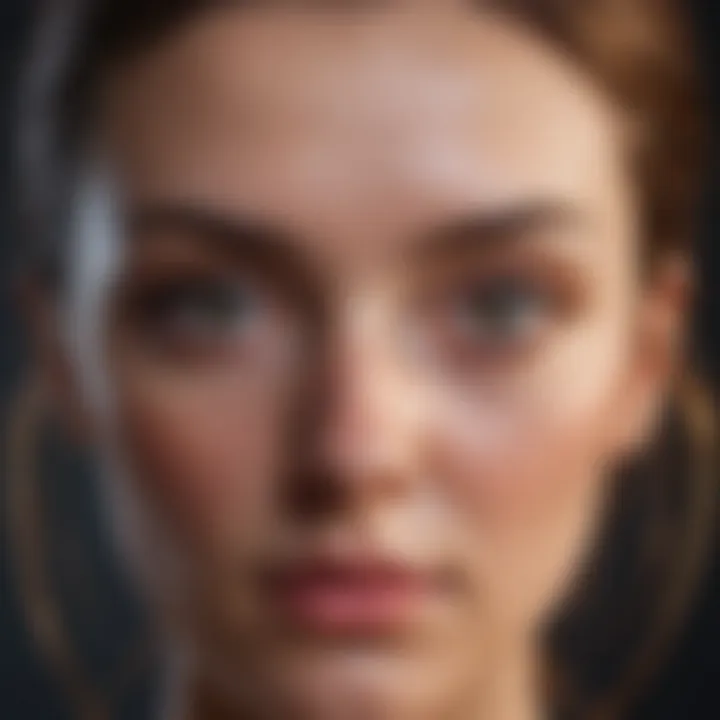
Understanding pareidolia in technology allows for advancements that not only comprehend human perception but also enrich interactions in AI and computer vision applications.
Implications of Pareidolia
Understanding the implications of pareidolia is essential for grasping its profound impact on various aspects of human experience. This phenomenon influences how we interpret our environment, shapes cultural narratives, and even affects our psychological well-being. By recognizing these implications, we can appreciate the nuances of everyday perceptions and the complex interactions between our cognitive processes and societal beliefs.
Impacts on Perception and Belief Systems
Pareidolia can significantly alter our perception of reality by leading us to attribute meaning to random stimuli. For instance, seeing a figure in clouds or hearing a voice in white noise can reinforce particular beliefs or notions without any factual basis. This tendency can create cognitive biases, affecting decision-making and personal beliefs.
- The confirmation bias often manifests through pareidolia, where individuals find patterns or connections that affirm pre-existing beliefs. This can perpetuate myths or misinterpretations within society.
- In times of uncertainty, such as during crises, pareidolia may become more prevalent. People might be more inclined to see patterns that align with their fears or hopes. This behavior can lead to collective phenomena, where groups share similar distorted perceptions.
The implications of pareidolia extend into the realm of mental health. On one hand, it can serve as a coping mechanism by providing comfort through familiar patterns. On the other hand, it may exacerbate conditions like anxiety, wherein individuals may perceive threats that are not necessarily present.
Cultural Significance
Culturally, pareidolia plays an intriguing role in shaping traditions and beliefs. Throughout history, societies have drawn meaning from perceived images, whether in nature or in art, leading to rich narratives.
- Religious symbolism is one area where pareidolia often surfaces. Apparitions of sacred figures in everyday objects or phenomena are frequently interpreted as divine messages. These interpretations can strengthen the faith of believers and shape religious practices.
- Additionally, pareidolia influences artistic expression. Many artists exploit the human tendency to perceive patterns, creating works that challenge viewers to find meaning in ambiguity. By doing so, they engage with the audience on a deeper intellectual level.
Moreover, contemporary culture continues to engage with pareidolia through memes and viral images. The online community often shares instances of pareidolia, which fuels collective interpretation and humor, further embedding this phenomenon in the fabric of culture.
"Pareidolia is not just a quirk of perception; it shapes our beliefs and cultures, driving both communal and individual experiences of reality."
Experiments and Studies on Pareidolia
Understanding pareidolia demands a thorough investigation of the research conducted in this field. It reveals how we interpret ambiguous stimuli, linking our cognitive responses to visual or auditory phenomena. This section focuses on the importance of experiments and studies on pareidolia by exploring specific results and ongoing research trends.
Notable Research Findings
Numerous studies have aimed to quantify and analyze pareidolia. A prominent study conducted by G. S. D. Marlow, D. D. Pendleton, and L. S. Deaton examined how participants recognized faces in a variety of images. It showed that individuals tend to identify facial features in random patterns, emphasizing the brain's inclination towards familiar signs.
Another significant finding from S. P. H. D. L. P. Klószko and K. J. B. W. Brooks highlighted a connection between pareidolia and mental health conditions, like anxiety. Participants diagnosed with anxiety disorders reported experiencing pareidolia more frequently. This suggests that heightened emotional states might enhance the likelihood of interpreting random shapes as meaningful images.
"Experiments reveal not only the cognitive potential of pareidolia but also its implications for mental well-being."
Additionally, a study in 2020 led by L. C. Zhao utilized machine learning to explore how artificial intelligence perceives pareidolic images. Results indicated that AI systems can also identify and categorize patterns akin to human pareidolia, opening avenues for advanced technology applications.
Current Trends in Research
Research into pareidolia continues to evolve, with numerous directions emerging.
- Psychological and Neurological Studies - Ongoing studies aim to understand the neurological underpinnings of this phenomenon. They seek to identify how different brain regions activate during pareidolic experiences. Such insights could better inform mental health treatments.
- Artificial Intelligence Innovations - With the increasing role of AI in pattern recognition, new studies focus on how machines can replicate or even surpass human pareidolia. Research is not just about identifying patterns but also about understanding the implications of AI's perception of randomness.
- Cross-Cultural Research - Another trend involves examining how different cultures experience pareidolia. Recent papers have discussed cultural variability in interpreting ambiguous stimuli, which adds depth to our understanding of this phenomenon.
These trends demonstrate that research on pareidolia is interdisciplinary. As scientists and researchers from various fields collaborate, they push the boundaries of our understanding of human perception and cognition.
Closure and Future Directions
The exploration of pareidolia showcases its multifaceted implications across various domains. Understanding this phenomenon is not just an academic exercise; it can open new avenues for psychological inquiry, artistic expression, and technological innovation. The articles provide a foundation for further investigation into how pareidolia influences individual perceptions, cultural beliefs, and even artificial intelligence systems.
Summary of Key Insights
In summary, pareidolia is deeply rooted in both cognitive psychology and evolutionary biology. The human brain’s pattern recognition capabilities lead to the perception of familiar shapes and sounds in random stimuli. Some key points to remember include:
- Psychological Basis: Pareidolia exemplifies how cognitive processes work. The brain's tendency to seek patterns can sometimes create misinterpretations of reality.
- Cultural Significance: Throughout history, pareidolia has played roles in art and spirituality, influencing how cultures perceive divine signs or significant events within their environments.
- Technological Applications: In advanced technological landscapes like artificial intelligence, understanding pareidolia can enhance the ability to develop better pattern recognition algorithms, improving machine learning techniques.
Thus, the implications of pareidolia resonate through both the human experience and the development of technology.
Potential Areas for Further Study
The journey into understanding pareidolia is far from complete. There exists a myriad of avenues for future research, which could yield valuable insights:
- Neuroscientific Investigations: Studies could focus on how specific brain regions activate during episodes of pareidolia. This could be achieved through brain imaging techniques such as fMRI.
- Cultural Studies: Examining how pareidolia manifests across different cultures can unveil how environment influences perception.
- Artificial Intelligence Development: Further exploration into how AI can imitate or leverage human-like pareidolia could advance machine learning systems and improve their accuracy in pattern recognition.
- Mental Health Correlation: Investigating how pareidolia relates to anxiety and creativity might provide psychological benefits, especially in therapeutic settings. Understanding these relationships could harness imagination in ways that enhance emotional well-being.



